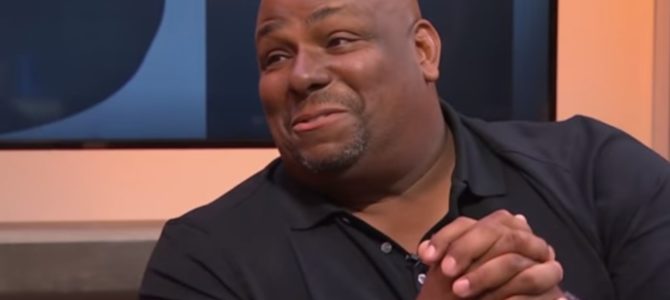
Why would a sports team pay $1.19 million to a 58-year-old who hadn’t played in Major League Baseball for two decades—and continue to do so through 2035? Good question.
The story of “Bobby Bonilla Day,” celebrated today and every July 1 for the next 14 years, provides an interesting look at the nexus of money and sport. It also shows the hapless modern history of the New York Mets, complete with an appearance of one of America’s most infamous swindlers.
Player in the Twilight of His Career
Bonilla, a Bronx native of Puerto Rican descent, enjoyed a long and fairly noteworthy career in the big leagues. A six-time All-Star, Bonilla, along with then-teammates Barry Bonds and Andy Van Slyke, helped propel the Pittsburgh Pirates to two straight division titles in 1990 and 1991.
Following the 1991 season, Bonilla became a free agent and left for the Mets. He spent four years with the team, followed by stints with the Baltimore Orioles, Florida Marlins (where he won a World Series in 1997), and Los Angeles Dodgers, until he returned to the Mets in 1999.
By this time, Bonilla had turned 36, and age plus persistent questions about his attitude and temperament had taken their toll. During the 1999 season, he played in 60 games, and obtained only 19 hits the entire year, batting an anemic .160. To top it off, during the 1999 National League Championship Series, Bonilla and a teammate reportedly played cards in the team’s clubhouse while the rest of the Mets were on the field fighting for their playoff lives, as part of “a show of defiance against manager Bobby Valentine.”
The Mets wanted to get rid of their aging, insolent player, so released Bonilla prior to the 2000 season. But they still owed him the $5.9 million left on his contract.
A Great Deal—And a Ponzi Scheme
Rather than buy out their released player’s contract with up-front cash, the Mets agreed to a deal proposed by Bonilla and his agent, Dennis Gilbert. In lieu of the $5.9 million payment in 2000, the Mets agreed to pay Bonilla $1.19 million—or $1,193,248.20, to be precise—every year, beginning on July 1, 2011, and continuing every July 1 through 2035.
As a result of the deal, Bonilla will remain on the New York Mets’ payroll until the slugger turns 72. In total, Bonilla will receive $29.8 million from the Mets to buy out his $5.8 million contract—all this in compensation for a 2000 season in which he did not play for New York.
Why would the Mets’ ownership agree to such a seemingly one-sided deal? Believe it or not, the answer lies in part with Bernie Madoff. Fred Wilpon, the Mets’ majority owner up until last season, had invested much of his money with the now-notorious perpetrator of the largest Ponzi scheme in history.
According to Irving Picard, the trustee responsible for recovering ill-gotten gains on behalf of Madoff’s victims, Wilpon received such sizable “returns” from Madoff’s Ponzi scheme that he and his partners used it to help fund the Mets’ operations. Wilpon allegedly “took out bank loans just to invest the borrowed money with Madoff, confident that their returns would be better than the interest on the loan.” (Think about that for a moment: A billionaire Major League Baseball owner took out loans for the express purpose of “investing” those funds with a con man.)
Wilpon and his colleagues eventually agreed to settle the trustee’s suit, agreeing to repay $162 million to settle Picard’s claims that they knew of, and actively participated in, Madoff’s fraud. But even though Wilpon sold the Mets to hedge fund owner Steve Cohen last year, his legacy, in the form of “Bobby Bonilla Day,” will continue for years to come.
A Player’s Wise Investment
Various discussions of Bonilla’s contract have analyzed whether the $29.8 million paid out between 2011 and 2035 posed a smarter option than the $5.9 million he could have received up-front from the Mets two decades ago. Of course, if Bonilla had invested his $5.9 million in a highly successful venture—say, buying Amazon stock back in 2000, or investing in Facebook or Google shortly after they went public—he could have made far more than the $29.8 million he will ultimately receive.
But Bonilla’s contract, which assumed 8 percent interest, provides a guaranteed rate of return with zero risk. Even back in 2000, when the Federal Reserve’s federal funds rate stood at 6.5 percent, Bonilla’s contract assumed a generous rate of return. Today, with interest rates having spent the better part of the past two decades falling, even a 0.8 percent rate of return seems high, while a guaranteed 8 percent rate of return seems unthinkable.
The fact that Wilpon believed he could get a higher rate of return than the 8 percent he and the Mets paid to Bonilla by “investing” his money with Madoff says everything one needs to know about this deal. Bobby Bonilla Day commemorates an ironic reversal of fortune in pro sports: A player getting a historically good deal—because a team owner made a historically bad one.









